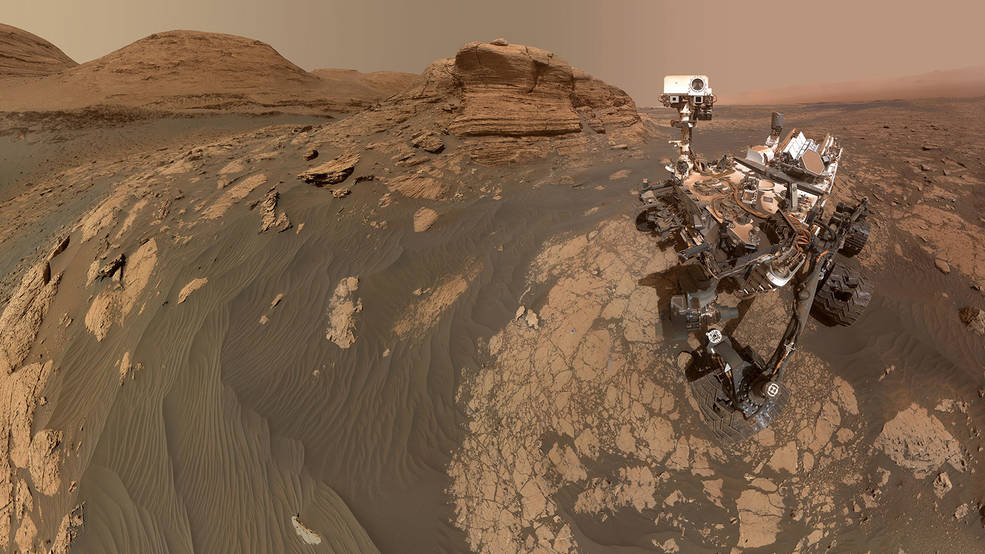
NASA’s Curiosity Rover on Mars. (Photo: NASA/JPL-Caltech/MSSS)
The discoveries made by the Curiosity probe gave researchers hope that there is a huge lake of Mars in Gale Crater, and therefore traces of life. But maybe it was just a pond landscape.
Just a few days ago, NASA dashed hope, fueled by Italian researchers, that there might be large amounts of water under the south polar cap of Mars. So the hoped Martian lakes could be made of mud instead of water. A study by the University of Hong Kong has now cast doubt on another possible location for finding water – and thus also the traces of life to be found there.
Survived by the wind, not by the water
In Science Advances Published study It deals with the effects of weathering in Gale Crater on Mars, which, according to researchers, was created indoors by winds (Aeolians) and outdoors rather than underwater (Semi-Arian). It was originally assumed that the 154-kilometer-wide crater, through which the Mars probe Curiosity has been moving for nine years, would have contained a huge lake 3.7 billion years ago.
In 2014, NASA announced that the lake was large enough to last for millions of years. This is a prerequisite for having enough time for life to arise. The research team from Hong Kong, led by doctoral student Jiacheng Liu, interprets the data from the results collected by Curiosity differently. Therefore, the majority of mudstone deposits were not formed under the influence of water.
Storm crater: many small ponds instead of a large lake
Instead, it is more like sediment that entered the crater through volcanic activity or wind. Then acid rain changed the sediments for hundreds of millions of years. vs space.com Joe Michalsky, co-author of the study, said the study suggests that Gale crater may have contained several small ponds rather than one large lake. However, it is likely to have survived a few tens of thousands of years maximum. Conversely, the chance of life arising there is slim.
Now NASA’s persevering rover can bring more light into the dark. Because it moves into the 45-kilometer-wide Jezero crater to sample there. In any case, Michalsky assumes that there is “certainly” a larger lake there. Suspected that the sediments are different there. But this lake disappeared again after a certain time.




More Stories
Nvidia GeForce RTX 4090: AIDA64 gets Ada spearhead support
Rogue Trader – Details about the first cRPG in the series – CD-Action
t3n – Digital Pioneers | digital business magazine